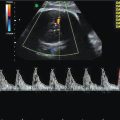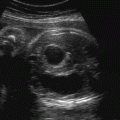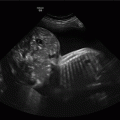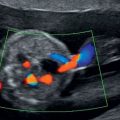B (alone, or with C or D)
C (alone)
D (alone, or with C)
E (alone, or with A, B, C or D)
130
180,117
2,122
2,692
81
141,644
1,605
20
21
24,257
431
366
18
12,259
85
1,431
10
1,957
1
875
The HSA4 form allows the recording of all medical conditions and other details associated with the ground, such as the method used to make the diagnosis. In previous years, only the principal medical condition was published. Table 18.2 shows totals for the number of mentions of a medical condition in 2012. For example, congenital malformations were mentioned 1,676 times within the 2,692 Ground E cases, although they were cited as the principal condition in 1,197 cases[23].
| England and Wales, residents | Numbers and percentagesb | ||||||
|---|---|---|---|---|---|---|---|
| ICD-10 code | Conditiona | Number of abortions by principal medical condition | Number of mentions by principal medical condition | Over 24 weeks’ gestation | |||
| Number | % | Number | % | Number | % | ||
| Total ground | E alone or with any otherc | 2,692 | 100 | 160 | 100 | ||
| Q00–Q89 | Congenital malformations total | 1,197 | 44 | 1,676 | 49 | 106 | 66 |
| Q00–Q07 | Nervous system total | 607 | 23 | 755 | 22 | 69 | 43 |
| Q00 | Anencephaly | 208 | 8 | 216 | 6 | 5 | 3 |
| Q01 | Encephalocele | 33 | 1 | 39 | 1 | 1 | 1 |
| Q02 | Microcephaly | 6 | 0 | 13 | 0 | 4 | 3 |
| Q03 | Hydrocephalus | 26 | 1 | 36 | 1 | 3 | 2 |
| Q04 | Other malformations of the brain | 109 | 4 | 156 | 5 | 30 | 19 |
| Q05 | Spina bifida | 149 | 6 | 167 | 5 | 5 | 3 |
| Q06–O07 | Other | 76 | 3 | 128 | 4 | 21 | 13 |
| Q10–Q18 | Eye, ear, face and neck | 2 | 0 | 2 | 0 | 0 | 0 |
| Q20–Q28 | Cardiovascular system | 191 | 7 | 305 | 9 | 12 | 8 |
| G30–Q34 | Respiratory system | 16 | 1 | 26 | 1 | 1 | 1 |
| Q35–Q37 | Cleft lip and cleft palate | 4 | 0 | 12 | 0 | 0 | 0 |
| Q38–Q45 | Other malformations of the digestive system | 6 | 0 | 16 | 0 | 1 | 1 |
| Q60–Q64 | Urinary system | 104 | 4 | 162 | 5 | 7 | 4 |
| Q65–Q79 | Musculoskeletal system | 174 | 6 | 287 | 8 | 11 | 7 |
| G80–G85 | Skin, breast integument phakomatoses | 7 | 0 | 11 | 0 | 1 | 1 |
| Q86–Q89 | Other | 86 | 3 | 100 | 3 | 4 | 3 |
| Q90–Q99 | Chromosomal abnormalities total | 1,012 | 38 | 1,088 | 32 | 32 | 20 |
| Q90 | Down’s syndrome | 544 | 20 | 570 | 17 | 3 | 2 |
| 0910–Q913 | Edwards’ syndrome | 211 | 8 | 226 | 7 | 8 | 5 |
| Q914–Q917 | Patau’s syndrome | 79 | 3 | 93 | 3 | 7 | 4 |
| Q92–Q99 | Other | 178 | 7 | 199 | 6 | 14 | 9 |
| Other conditions total | 483 | 18 | 663 | 19 | 22 | 14 | |
| P00–P04 | Fetus affected by maternal factors | 165 | 6 | 235 | 7 | 1 | 1 |
| P05–P08 | Fetal disorders related to gestation and growth | 27 | 1 | 38 | 1 | 11 | 7 |
| P35–P39 | Fetus affected by congenital infectious disease | 0 | 0 | 0 | 0 | 0 | 0 |
| P529 | Intercranial nontraumatic hemorrhage of fetus | 7 | 0 | 7 | 0 | 4 | 3 |
| P832–P833 | Hydrop fetalis not due to hemolytic disease | 39 | 1 | 81 | 2 | 1 | 1 |
| O30 | Multiple gestation | 39 | 1 | 45 | 1 | 0 | 0 |
| O41 | Disorder of the amniotic fluids | 4 | 0 | 8 | 0 | 0 | 0 |
| Z20–Z22 | Exposure to communicable disease | 6 | 0 | 7 | 0 | 5 | 3 |
| Z80–Z84 | Family history of heritable disorder | 154 | 6 | 191 | 6 | 0 | 0 |
| E84 | Cystic fibrosis | 15 | 1 | 17 | 0 | 0 | 0 |
| G71 | Disorder of the muscles | 11 | 0 | 18 | 1 | 0 | 0 |
| Other | 11 | 0 | 11 | 0 | 0 | 0 | |
| Not knownd | 5 | 0 | 5 | 0 | 0 | 0 | |
a ’Other’ conditions may be available by ICD-10 code on request.
b Percentages are rounded and may not add up to 100.
c ICD-10 codes are taken from the International Statistical Classification of Diseases and Related Health Problems (10th revision), published by the World Health Organization.
d ‘Not known’ includes one case that on further investigation was found to be performed under Ground C and not Ground E, and it was too late to amend the tables.
2 The all mentions totals show abortions where more than one medical condition is reported. Totals therefore do not equal the number of abortions performed under Ground E.
In 2012 in England and Wales, congenital malformations were reported as the principal medical condition in nearly half (44%) of the 2,692 abortions undertaken under Ground E. The most commonly reported malformations were of the nervous system (23%), cardiovascular system (7%) and musculoskeletal system abnormalities (6%). About one-third (38%) of pregnancies terminated under Ground E were reported to be for chromosomal abnormalities. Down’s syndrome was the most commonly reported and accounted for 20% of all Ground E cases[23] (Table 18.2).
Major structural abnormalities still constitute a major cause of perinatal mortality, accounting for 9.6% of stillbirths and 21.5% of neonatal deaths in 2009 in the UK[29].
In 2012 in Scotland, 159 (1.3%) abortions were carried out under Ground E of the Abortion Act. Of these, 30 were for Down’s syndrome, 26 for other chromosomal anomalies, 15 for anencephaly and 13 for musculoskeletal conditions[23] (Table 18.3).
| Country of abortion |
Numbers and percentages |
|||||
|---|---|---|---|---|---|---|
|
England and Wales |
Scotland |
UK |
||||
| All legal abortions | 190,972 | 100% | 12,447 | 100% | 203,419 | 100% |
| Total under Ground E | 2,692 | 100% | 159 | 100% | 2,851 | 100% |
| Nervous system (Q00–Q007) | 607 | 23 | 41 | 26 | 648 | 23 |
| Other congenital malformations (Q10–Q89) | 590 | 22 | 40 | 25 | 630 | 22 |
| Chromosomal abnormalities | 1,012 | 38 | 56 | 35 | 1,068 | 37 |
| Other | 483 | 18 | 22 | 14 | 505 | 18 |
Between 2006 and 2009 the number of abortions performed per year under Ground E in England and Wales was static. Between 2009 and 2012 there was an increase of 29%, whilst overall there was a slight fall in the total number of abortions. The percentage of the total number performed under Ground E has increased from 0.98% to 1.45% over 5 years from 2007. These figures may be a reflection of improved antenatal screening programmes (Table 18.4).
| Year | Total number abortions | Total abortions under Ground E (% of total number abortions) | Abortions under Ground E under13 weeks (% of abortions under Ground E) | Abortions under Ground E 13–19 weeks (% of abortions under Ground E) | Abortions under Ground E 20–23 weeks (% of abortions under Ground E) | Abortions under Ground E ≥24 weeks (% of abortions under Ground E) |
|---|---|---|---|---|---|---|
| 2006 | 193,700 | 2,036 (1.05) | 315 (15.5) | 1,018 (50.0) | 567 (27.8) | 136 (6.7) |
| 2007 | 198,500 | 1,939 (0.98) | 291 (15.0) | 1,000 (51.6) | 513 (26.5) | 135 (7.0) |
| 2008 | 195,296 | 1,988 (1.02) | 309 (15.5) | 999 (50.3) | 556 (28.0) | 124 (6.2) |
| 2009 | 189,100 | 2,085 (1.10) | 329 (15.8) | 1,020 (48.9) | 600 (28.8) | 136 (6.5) |
| 2010 | 189,574 | 2,290 (1.21) | 382 (16.7) | 1,116 (48.7) | 645 (28.2) | 147 (6.4) |
| 2011 | 189,931 | 2,307 (1.21) | 338 (14.7) | 1,191 (51.6) | 631 (27.4) | 147 (6.4) |
| 2012 | 185,122 | 2,692 (1.45) | 386 (14.3) | 1,431 (53.2) | 715 (26.6) | 160 (5.9) |
Abortions over 24 weeks of gestation accounted for less than 0.1% of the total. Although there were 160 abortions at or over 24 weeks in 2012 in England and Wales compared with 135 in 2007, they represent 5.9% of the total number of abortions carried out under Ground E compared with 7% in 2007. Whilst the proportion of abortions at 24 weeks and over has fallen slightly since 2007 there has been no change in the proportion at 20–23 weeks of gestation, which has remained at around 27% of the total under Ground E (Table 18.4).
Current national guidelines recommend that routine screening for Down’s syndrome should be performed before 14 completed weeks of pregnancy to allow early decisions to be made, including whether to have an invasive diagnostic test and, if fetal aneuploidy is confirmed, whether to undergo induced abortion[30]. This would allow women to have an abortion at an earlier gestation with a reduced complication rate and avoid the necessity of feticide.
There were no abortions associated with rubella under Ground E in 2012. In the past 10 years, there have been seven abortions associated with rubella in England and Wales: two in 2003, three in 2005, and one in each 2006 and 2007[23].
In 2012, 75% of abortions under Ground E overall were performed medically compared with 48% of all abortions. Under 15 weeks of gestation, approximately half of the abortions under Ground E were medical. At 15–16 weeks, the ratio of medical to surgical abortions under Ground E was 4:1 and at 17–19 weeks it was 9:1. At 20–21 weeks, 99% were performed medically and at 22 weeks and over it was 97%[23] (Table 18.5).
| England and Wales, residents |
Number of cases |
||||||
|---|---|---|---|---|---|---|---|
|
Gestation weeks for abortions performed under Ground E |
|||||||
| Procedure | Total | Under 13 | 13 & 14 | 15 & 16 | 17 to 19 | 20 & 21 | 22 and over |
| Total abortions | 2,692 | 386 | 795 | 353 | 283 | 482 | 393 |
| Surgical | 676 | 213 | 344 | 72 | 28 | 6 | 13 |
| Vacuum aspiration | 452 | 175 | 261 | 16 | 0 | 0 | 0 |
| Dilatation and evacuation | 154 | 16 | 64 | 52 | 19 | 3 | 0 |
| Feticide with a surgical evacuationa | 70 | 22 | 19 | 4 | 9 | 3 | 13 |
| Medical | 2,016 | 173 | 451 | 281 | 255 | 476 | 380 |
| Antiprogesterone with or without prostaglandin | 1,463 | 165 | 420 | 256 | 221 | 372 | 29 |
| Other medical agent | 127 | 8 | 31 | 25 | 29 | 24 | 10 |
| Feticide with a medical evacuationb | 426 | 0 | 0 | 0 | 5 | 80 | 341 |
The National Down’s Syndrome Cytogenetic Register (NDSCR) began collecting data for England and Wales in 1989[31]. Screening tests for Down’s syndrome were introduced at that time, and since 2003 when the UK National Screening Programme was introduced, first-trimester screening has become gradually available to all women in England and Wales. This has resulted in an increase in the number of antenatal diagnoses of Down’s syndrome. An increase in maternal age has contributed to this rise. The prevalence of Down’s syndrome has also increased as pregnancies that would previously have resulted in miscarriage are being diagnosed.
In 1989, the NDSCR reported a total of 1066 Down’s syndrome diagnoses, 318 (30%) of which were made antenatally. In 2012, the total number of diagnoses had risen to 1982, of which 1259 (64%) were antenatal. Around 90% of women with an antenatal diagnosis of Down’s syndrome undergo termination of pregnancy. There has been a slight decrease in this proportion, from 92% between 1989–2010 to 90% in 2011–2012. However, the NDSCR data show that overall the number of terminations of pregnancy that were performed after a diagnosis of Down’s syndrome has increased more than fourfold from 302 in 1989 to 1331 in 2012.
First-trimester screening has resulted in the diagnosis of Down’s syndrome being made earlier in pregnancy, thereby allowing termination of pregnancy to be carried out at lower gestations. In women under 35 years of age in 1989, only 2% of abortions after a diagnosis of Down’s syndrome were performed under 15 weeks of gestation, which increased to 46% in 2012. In women over 35 years old, the increase was from 18%–50%. The proportion of terminations of pregnancy performed at 21 weeks of gestation and over reduced from 52% in 1989 to 12% in 2012 in women under 35, and from 19% to 6% in women over 35 years old[26].
These figures reflect those of the UK Department of Health statistics but are considerably higher, possibly as in some cases the abortion if under 24 weeks of gestation, will have been legally performed under clause C of the Abortion Act or due to under-reporting to the Department of Health.
The number and prevalence of live births affected by Down’s syndrome have not changed significantly, there being 750 cases in 1989 and 775 in 2012.
Complications
Complications of abortion increase with gestational age. This is especially the case with medical abortion. Complications were reported in 278 cases in 2012, a rate of about one in every 700 abortions, which was the same as in 2011 and 41% less than in 2002[22] (Table 18.6).
| England and Wales, residents |
Complication rates per 1,000 abortions |
||
|---|---|---|---|
|
Gestation weeks |
Total all procedures |
Procedure |
|
| Surgical | Medical | ||
| Total complications (number of cases) | 278 | 91 | 187 |
| All gestations | 2 | 1 | 2 |
| 3–9 weeks | 1 | 1 | 1 |
| 10–12 weeks | 2 | 2 | 3 |
| 13–19 weeks | 5 | 1 | 16 |
| 20 weeks and over | 12 | 3 | 29 |
a Complications include hemorrhage, uterine perforation and/or sepsis, and are those reported up to the time of discharge from the place of termination.
There were no maternal deaths following abortion notified to the Department of Health in 2012. In the triennium 2006–2008, there were 107 direct maternal deaths in the UK. Two were associated with abortion and both of these were from genital tract sepsis. There were a total of 628,342 abortions in the triennium 2006–2008, making the mortality rate of induced abortion 0.32/100,000[32].






